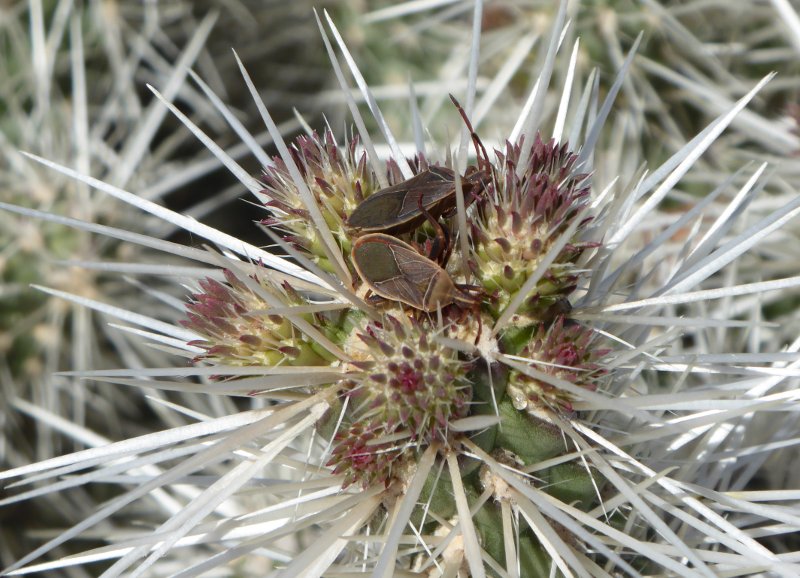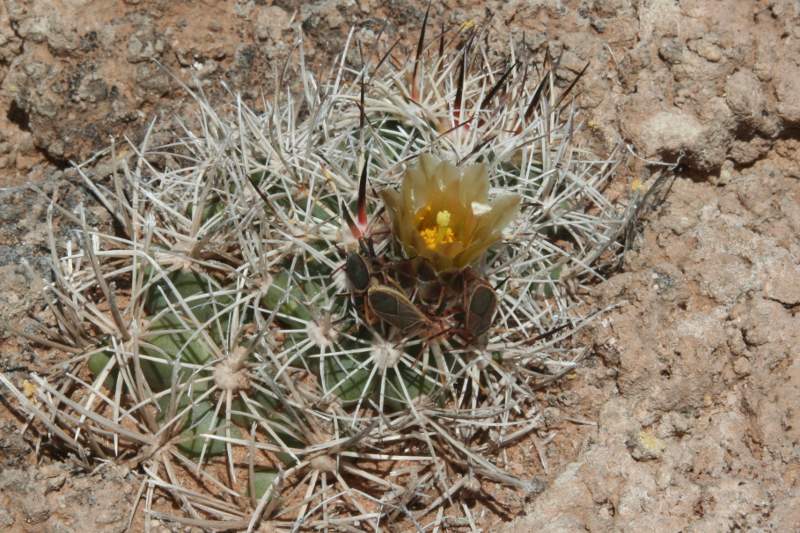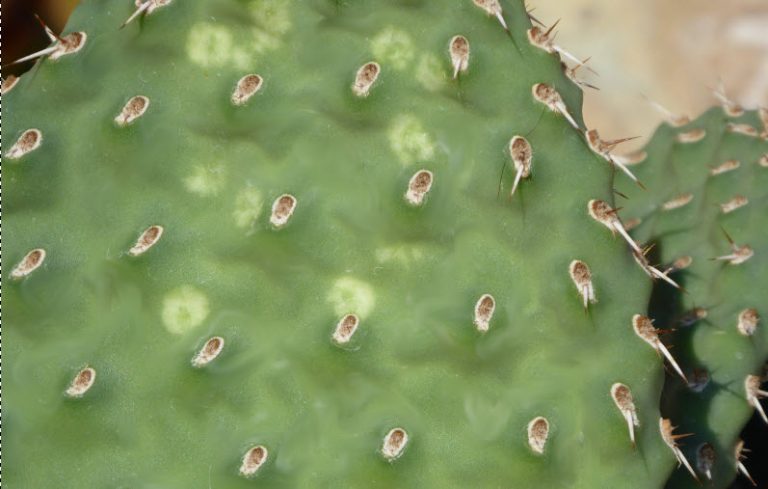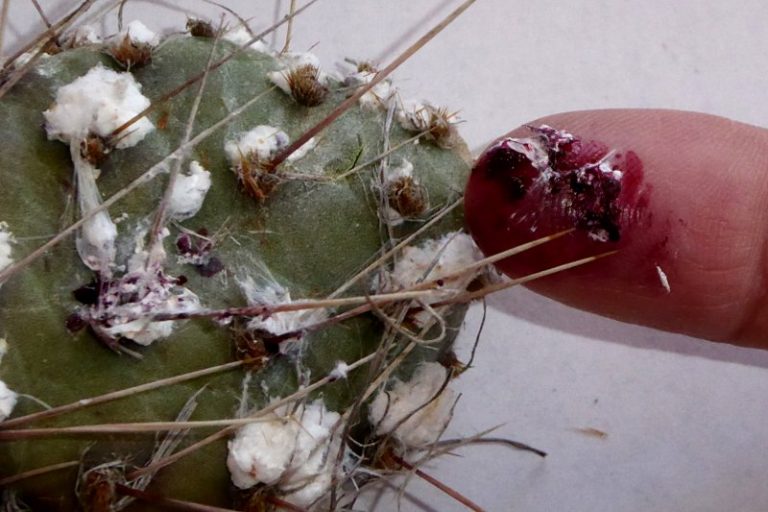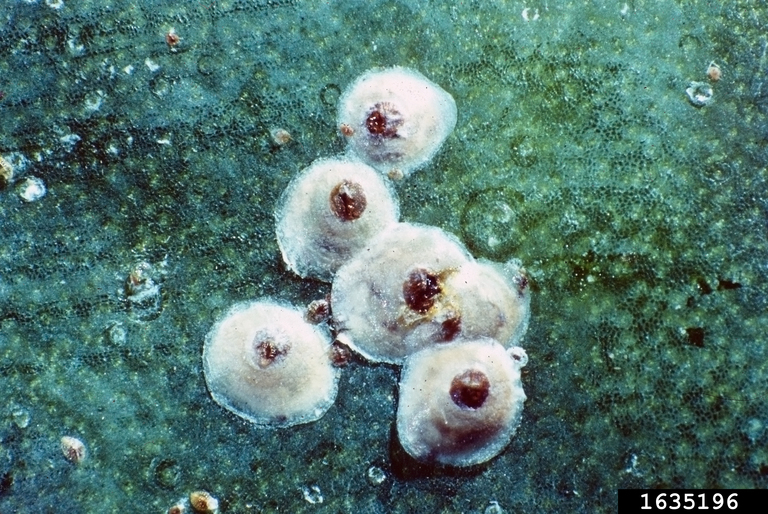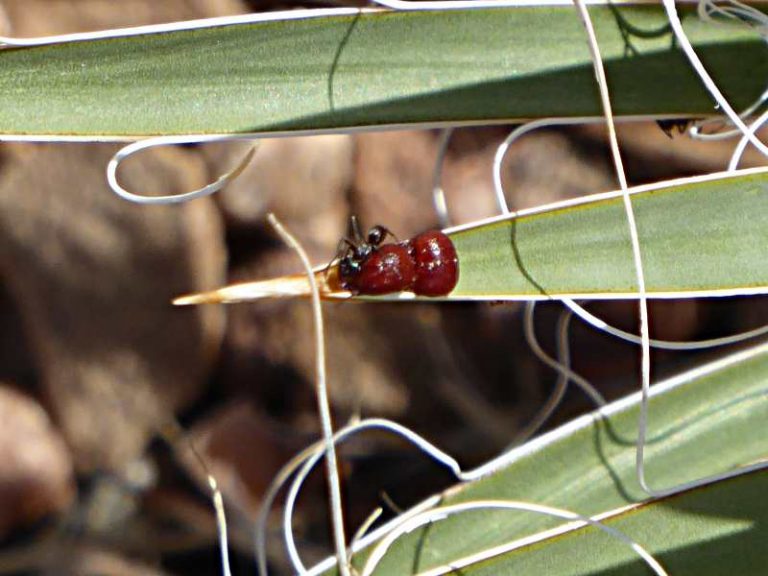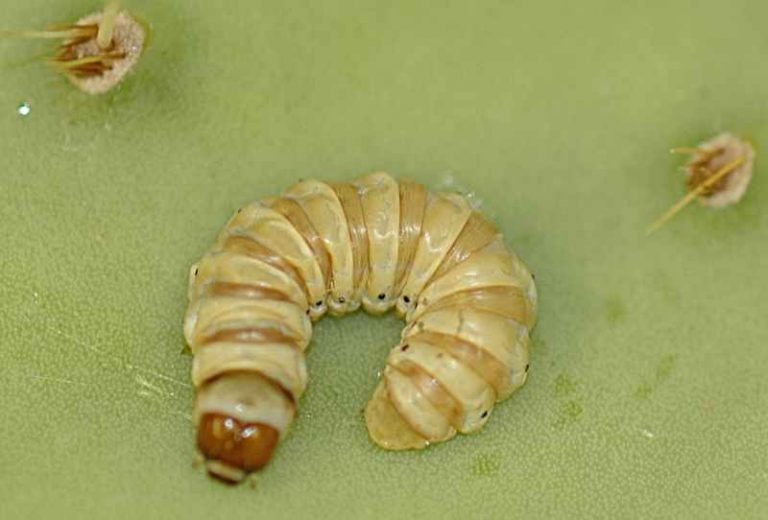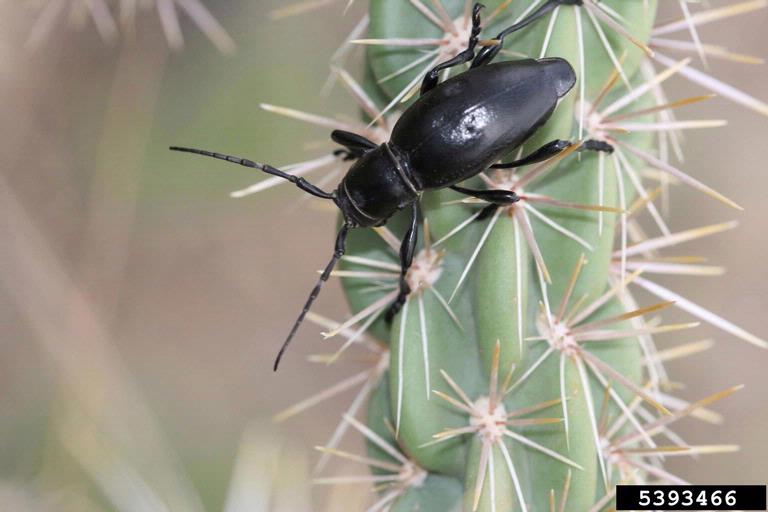Cactus and other succulents are tough, but are not without their pests and diseases. Identified early, most of these problems can be remedied — or at least reduced to tolerable levels. The information that we’ve collected covers the common pests and diseases that we have here in western Colorado and should help with early identification. We’ve included some treatment options but these are not exhaustive, simply treatments that have worked for club members. Remember that healthy plants are better able to withstand attack than stressed plants, so your first line of defense is taking good care of your plants with proper watering, soil selection, fertilizing and placement.
Cactus Bugs
Chelinidea vittiger are “true” bugs, belonging to the order Hemiptera, They have piercing / sucking mouthparts for drinking sap (phloem) and you will find them drilling the vulnerable parts of a wide variety of our outdoor cold hardy cacti: flower buds, new cholla growth, immature opuntia pads but also older pads and cactus parts. Don’t ignore them: in sufficient numbers, they will kill the cactus. On opuntia their feeding pattern leaves ugly circular blemishes on the pads (image at right). Cactus bug eggs are laid on cactus spines and are not easy to find.
Treatment: Insecticidal soaps or horticultural oils can work on nymphs, but the adults are tough to control. For a systemic treatment and prevention a product that contains the neonicotinoid imidacloprid works well as a foliar spray or soil drench. This will provide systemic control and some contact mortality. Do not apply to a plant before or during bloom as imidacloprid can move into the nectar and will harm pollinators! More information on imidacloprid may be found at this UCDavis Integrated Pest Management page on Imidacloprid . Acetamiprid (another neonicotinoid) can be applied as a foliar spray and more environmentally benign than imidacloprid. It is not labeled as a soil drench. You will also want to pluck off and kill any bugs that you see on the plants. Hunting them down can be extremely challenging and frustrating as cactus bugs, especially the adults, are wary and agile movers and are great at hiding in inaccessible parts of the plant and in plant litter. On spiny plants try using spoon-type barbecue tongs to grab, envelope and sweep them into something like a kitchen storage container where you can crush them. They give off a vile odor. If you know that cactus bugs are present on an individual but can’t find them, try giving the plant a light spray with water. The bugs will tend to crawl up to the top of the plant.
Cochineal
Cochineal (Dactyloipius spp.) belong to a family of scale insects that feeds on plant sap. This widespread and all-to-common outdoor pest is almost entirely restricted to the prickly pear cacti. These insects produce large masses of unsightly white frothy-looking wax that contain the females and their eggs. When the insects are smashed they produce a brilliant crimson substance (hemolymph, the insect’s equivalent of blood) which contains carminic acid. All species of the genus produce this colorful and once widely used dye. Only one, the large Dactyloipius coccus, is cultivated for this purpose. Some species of cochineal are be host-specific, so if you tire of battling cochineal in your garden, replace the affected plants with a different species of opuntia. Left unchecked, cochineal will kill the cactus.
Treatment: Spraying with a high pressure water spray may remove some of the visible insects, but doesn’t affect the insects hiding under the bottom of the pads and at the ground line. A mixture of acetamiprid (or imidacloprid) and water or can be applied with a hose-end sprayer to control mild infestations. Time the application after bloom, so as to not harm pollinators. If infestations are severe (as shown in the images to the right), the best course of action is to remove the affected plant. If you choose to excise only the obviously affect part of the plant, keep an eye on it for future infestations.
Brown Soft Scale
Brown soft scale belong to one of the largest and widespread and scale families of the Hemiptera. These mound-like insects may appear on the stems and lower leaves of indoor or outdoor cacti and succulents. After hatching, the nymphs crawl about for a bit, eventually settling on the plant surface. The adult form then secretes a waxy “helmet”-like covering that swells up when eggs are produced. The insects suck the plant’s sap (phloem) and produce copious amounts of a sticky honeydew which encourages an unsightly black fungus, “sooty mold”, to develop on plant leaves and stems.The honeydew also attracts ants that feed on it. Affected plants will not thrive.
Treatment: If the infestation is light you can control these insects by hand picking or scraping them off. On indoor plants, heavier infestations may be controlled by insecticidal soaps or horticultural oil preparations. This will only be effective against the nymphs (“crawlers”) and kill by suffocation, so thorough coverage of the plant is necessary. Heavier infestations may require the application of a systemic neonicotinoid product like acetamiprid or imidicloprid. Plants with very heavy infestations should be discarded.
Cactus Borer
Cactus borers (cactus longhorned beetles), Moneilema spp., favor prickly pears and cholla but have been documented as pests on barrel cacti, including some of our native sclerocacti. The adult is a large (about 1 inch) flightless nocturnal or crepuscular black beetle that feeds on and lay eggs on the outside of cactus stems. The larvae, as the common name suggests, tunnel into the plants and devours them from within.
Treatment: The most effective control of the beetle is to hand pick and destroy them in the early morning or late evening when they are active, but when there is still enough light to hunt them down.

